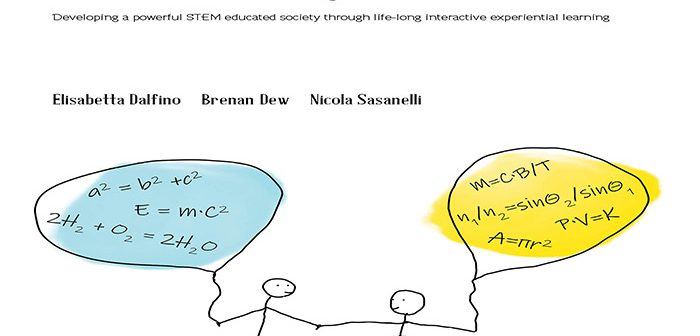
In an era characterised by rapid technological advancements and globalisation, the need for STEM literacy among the workforce of today, and of tomorrow’s future workforce, is paramount.
This publication highlights an innovative collaboration that extends beyond the confines of the traditional classroom. It aims to inspire and equip young students with essential skills for success in a knowledge-based economy through interactive experiences.
The book introduces a concept of a ‘systemic and synergistic environment’. It represents a holistic ecosystem where young people from early childhood through to young adulthood are nurtured and can evolve as powerful, STEM-literate individuals and globally responsible citizens.
Educational curricula must prioritise STEM integration from early childhood through higher education, emphasising ‘hands-on learning’, ‘inquiry-based pedagogies’, and ‘real-world applications’. Additionally, initiatives aimed at promoting diversity and inclusivity within STEM fields are imperative to harnessing the full spectrum of talent and perspectives.
An active part of the “systemic and synergistic environment” is the role of museums and science centers that serve as valuable spaces for experiential learning, offering interactive engagement that goes beyond traditional teaching methods.
Through hands-on activities, workshops and engaging exhibits, museums complement formal education settings like Montessori and Reggio Children schools, providing diverse learning opportunities that cater to various learning styles and preferences. This integration enriches educational experiences, fosters crucial thinking skills, and nurtures lifelong love of learning and exploration.
Collaborative efforts between museums, science centres, cultural institutions, schools, and families in the home are crucial to supporting young students and encouraging them to develop interest, creativity, and passion for STEM fields within dynamic and synergistic informal learning environments.
This book presents a timely and important message that requires everyone’s involvement, from early childhood educators to government decision-makers. Recognising that we live in a knowledge-based economy, it is essential to acknowledge that Australia requires a substantial workforce educated in STEM subjects.
Competing with other industrialised nations in the development of innovative products and services with high added value is the sole method to stay competitive.
Educating and training the future workforce is essential, but it comes at a cost to society:
- A higher proportion of science museums relative to population density.
- Enhanced incentives for schools to facilitate regular student visits to museums, with a special focus on schools in rural areas.
- Museums require additional resources to periodically update and renew their exhibitions.
This book is not-for-profit and proceeds from its sale will support an educational project aimed at promoting STEM subjects in one of the Aṉangu Pitjantjatjara Yankunytjatjara (APY) Lands schools. The project has been designed and it will be developed with Makers Empire.
“A dynamic and synergistic environment where STEM knowledge flourishes” – Developing a powerful STEM educated society through life-long interactive experiential learning, by Elisabetta Dalfino, Brenan Dew and Nicola Sasanelli. Cost AU$31.00
To purchase visit “A dynamic and synergistic environment where STEM knowledge flourishes” by Elisabetta Dalfino, Brenan Dew and Nicola Sasanelli – Agora (agora-hightech.com.au)






